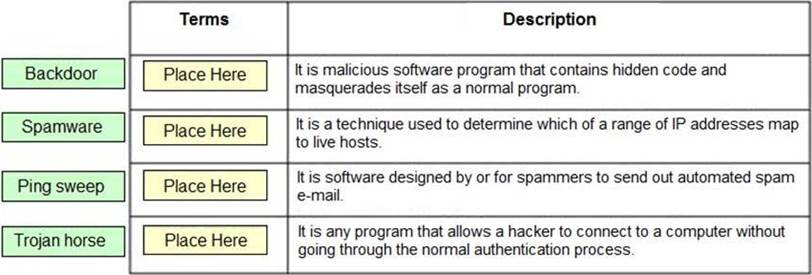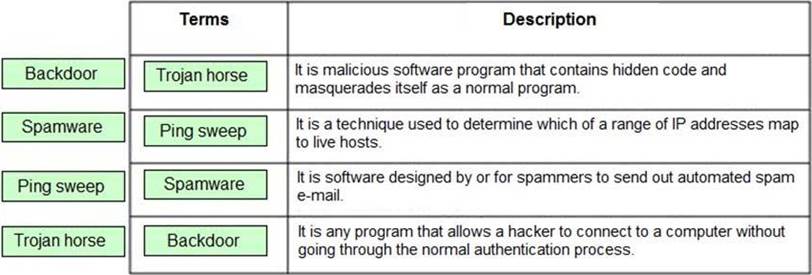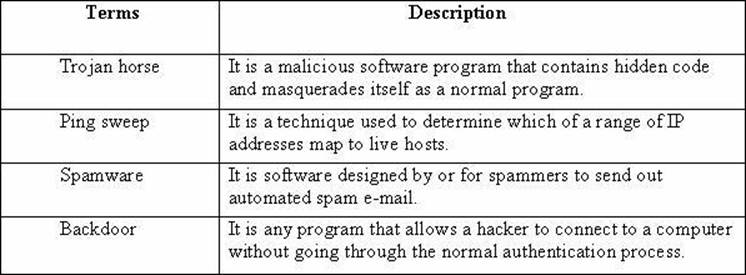- All Exams Instant Download
Drag and drop the terms to match with their descriptions
DRAG DROP
Drag and drop the terms to match with their descriptions.

Answer: 
Explanation:

A Trojan horse is a malicious software program that contains hidden code and masquerades itself as a normal program. When a Trojan horse program is run, its hidden code runs to destroy or scramble data on the hard disk. An example of a Trojan horse is a program that masquerades as a computer logon to retrieve user names and password information. The developer of a Trojan horse can use this information later to gain unauthorized access to computers. Trojan horses are normally spread by e-mail attachments. Ping sweep is a technique used to determine which of a range of IP addresses map to live hosts. It consists of ICMP ECHO requests sent to multiple hosts. If a given address is live, it will return an ICMP ECHO reply. A ping is often used to check that a network device is functioning. To disable ping sweeps on a network, administrators can block ICMP ECHO requests from outside sources.
However, ICMP TIMESTAMP and ICMP INFO can be used in a similar manner. Spamware is software designed by or for spammers to send out automated spam e-mail. Spamware is used to search for e-mail addresses to build lists of e-mail addresses to be used either for spamming directly or to be sold to spammers. The spamware package also includes an e-mail harvesting tool. A backdoor is any program that allows a hacker to connect to a computer without going through the normal authentication process. The main advantage of this type of attack is that the network traffic moves from inside a network to the hacker’s computer. The traffic moving from inside a network to the outside world is typically the least restrictive, as companies are more concerned about what comes into a network, rather than what leaves it. It, therefore, becomes hard to detect backdoors.
Latest 312-38 Dumps Valid Version with 120 Q&As
Latest And Valid Q&A | Instant Download | Once Fail, Full Refund
Subscribe
Login
0 Comments
Inline Feedbacks
View all comments

